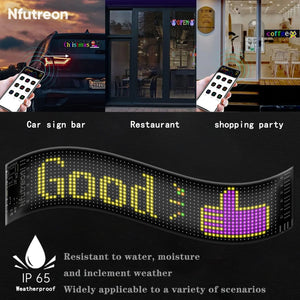LEDs are the backbone of modern display systems, used in everything from simple indicators to giant billboards. They are essential in many industries. Knowing the different types of LED displays—Monochrome, Bicolor, Full-Color—is key to choosing the right one for your needs. This article will explore the characteristics, applications and benefits of each, and look back at the journey and impact.

Monochrome LED Displays
Monochrome LED displays are the most basic form of LED technology. They use single colour diodes, usually red, green or blue. They are used where simplicity and clarity is key. The simplicity of monochrome LEDs makes them cost effective and easy to use, that’s why they are found in digital clocks, calculators and basic signage. In industrial applications, monochrome LEDs are used as indicators on control panels and status displays where their plain design ensures clear communication.
While monochrome LEDs have their benefits, they are limited by their single colour output, which means they are only suitable for scenarios where colour variation is not required. They are power efficient and long lasting but lack the visual appeal and dynamic capabilities for more complex display needs.

Bicolor LED Displays
Bicolor LEDs are an evolution from monochrome, they can display two colours, usually red and green. This is achieved by using two diodes in the same housing which can be lit individually or together to produce a third colour (usually yellow). Bicolor LEDs are useful in situations where clear dual state indicators are required. For example they are used in traffic lights where red and green can be shown from the same light source or in various indicator panels where different states need to be displayed.
The main advantage of bicolor LEDs is their versatility over monochrome LEDs, they can display more information with one light source. But their colour range is still limited and they require more complex control mechanism which can increase cost and complexity in design. Despite these challenges bicolor LEDs are highly valued in applications where simple multi state indication is required.
Full-Color LED Displays
Full colour LED displays, also known as RGB LEDs, are the pinnacle of LED technology, they can produce a wide range of colours by combining red, green and blue diodes. These are the base of modern digital signage, they can produce vibrant and dynamic visuals that can grab attention and convey complex messages. The ability to blend different intensity of red, green and blue light allows to create any colour, that’s why full colour LEDs are used in applications from billboards to high definition video walls.
In the entertainment industry full colour LEDs are used in stage lighting, TV screens and gaming monitors where the colour output engages the viewer and enhances the experience. Recent advancements have improved pixel density, brightness and energy efficiency of full colour LEDs. But this comes at a higher cost and more complex control systems so maintenance and operational requirements need to be carefully considered.

Comparing the Three LED Types
When comparing monochrome, bicolor and full colour LEDs several performance metrics need to be considered, brightness, colour range and energy efficiency. Monochrome LEDs are simple and efficient and are good for applications with minimal visual requirements. Bicolor LEDs are balanced between versatility and complexity and are good for environments where multiple states need to be displayed without overwhelming the user with too much information. Full colour LEDs are the highest visual impact and flexibility and are good for applications that require high definition and dynamic content.
It all depends on the application. For simple cost effective solutions monochrome LEDs are enough. Bicolor LEDs for more informative displays and full colour LEDs for engaging visual content. The LED display market is evolving and technology is pushing the boundaries of what these displays can do.
LED display technology has changed the way information is communicated and visual content is presented. From the simplicity of monochrome LEDs to the dynamic of full colour displays each type of LED has its own advantages for different applications. Knowing the spectrum of LED display technologies is key to making the right decision when choosing a display for any project. As the technology advances the possibilities for LED displays will only get bigger and more innovative for many industries.





